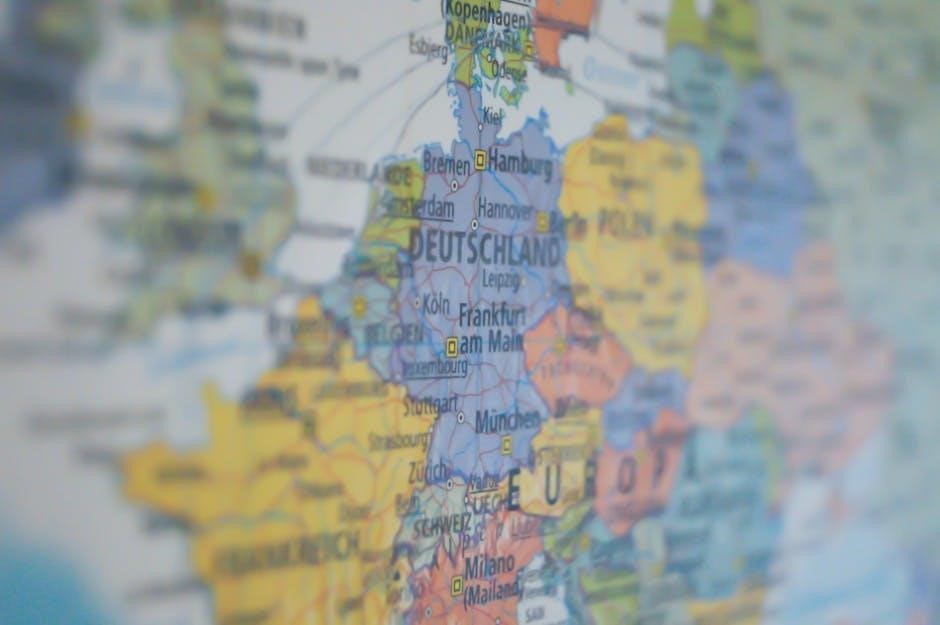Outlander: A Practical Guide for Time-Travelers
Welcome, intrepid traveler! This guide will navigate the complexities of time travel in the world of Outlander, blending historical romance with fantasy.
Time travel in Outlander is a central element, setting the stage for a captivating blend of history, romance, and fantasy. Unlike typical science fiction, Outlander presents time travel as a naturally occurring phenomenon tied to specific geographic locations and, potentially, certain times of the year, particularly around seasonal changes like Beltane. The primary method involves traversing standing stones, such as Craigh na Dun in Scotland, which act as portals to different eras. The series avoids elaborate time machines, instead focusing on the mystical and unexplained connection between individuals and these ancient sites. The mechanics are not fully understood, but it’s believed that certain people possess an innate ability to travel through time, often indicated by specific traits or experiences, such as hearing the stones or experiencing a warmth when touching gemstones. This introduction sets the foundation for exploring the rules, limitations, and inherent dangers of navigating the Outlander timeline, offering a practical guide for those who dare to venture into the past.

Understanding the Standing Stones
The standing stones are pivotal to time travel in Outlander. They act as portals, transporting individuals through time under mysterious circumstances.
The Significance of Craigh na Dun
Craigh na Dun is the primary location for time travel in Outlander. It’s a stone circle steeped in mystery, where the veil between centuries thins. Claire’s journey begins here, drawn by an inexplicable force during Beltane. The stones hum with energy, a resonance felt by those capable of traversing time. This specific location seems uniquely attuned to temporal shifts, making it a nexus point. The power of Craigh na Dun isn’t fully understood, but it’s undeniably linked to the ability to travel through time. The stones’ placement, arrangement, and perhaps even their composition contribute to their unique properties. Legends and folklore surround the site, hinting at ancient rituals and forgotten knowledge. For a time traveler, Craigh na Dun represents both a gateway and a point of no return. Touching the stones initiates the journey, but the consequences are unpredictable. The allure of Craigh na Dun lies in its promise of adventure, love, and danger in a different era. However, it also serves as a stark reminder of the irreversible nature of time travel and the sacrifices it demands. Understanding Craigh na Dun is crucial for anyone contemplating a journey through time in the Outlander universe.
Identifying Potential Time Travelers
Determining who can traverse time in Outlander is complex. Certain traits and experiences hint at the potential. Keep an eye out for these indicators.
Gemstones and Their Role
Gemstones appear to play a crucial, yet not fully understood, role in the mechanics of time travel within the Outlander universe. While not explicitly stated as a necessity, they are often associated with those who travel through the stones. Some theories suggest they act as a focusing agent, helping to direct the traveler’s intent and destination. Others believe they offer a form of protection during the journey, shielding the traveler from the potentially harmful effects of traversing time. Crucially, a new detail regarding the time travel rules is that gemstones appear to be warm to the touch for potential travelers, whereas non-travelers do not perceive this warmth. This “warmth test” could serve as an initial indicator of one’s ability to travel. Claire tells us Gillian believed you needed gemstones to protect and guide. The exact type of gemstone may also influence the destination or time period. Further research and experimentation are needed to fully comprehend the connection, but their significance cannot be ignored.
The Warmth Test
One of the most intriguing indicators of a potential time traveler in the Outlander universe is the “warmth test.” This test involves touching gemstones, particularly those known to be associated with time travel, and observing whether the individual perceives them as being unusually warm. According to observations within the series, individuals who possess the ability to travel through time often report feeling a distinct warmth emanating from the stones, a sensation that is not shared by those who lack this ability. This warmth is not merely a subjective feeling; it seems to be a tangible difference in the stone’s temperature, detectable only by those with the innate capacity for time travel. Therefore, if you find yourself near ancient standing stones and have access to gemstones, conducting the warmth test might provide an initial clue as to whether you possess the potential to embark on your own journey through time. However, it’s important to note that this test is not definitive, and further investigation is always recommended. Remember Claire tells us Gillian believed you needed gemstones to protect and guide.
Hearing the Stones
Beyond the warmth test and the possession of gemstones, another potential indicator of time-traveling ability is the capacity to “hear” the stones. This phenomenon is often described as a buzzing or humming sound emanating from the ancient standing stones, particularly Craigh na Dun. While not everyone present at the stones experiences this auditory sensation, those with the potential to travel through time often report hearing a distinct and unusual sound. This auditory experience is not simply an external noise; it seems to be a form of communication from the stones themselves, resonating specifically with individuals who possess the innate ability to traverse time. If you find yourself near standing stones and experience a buzzing or humming sound that others do not perceive, it could be a sign that you are attuned to the stones’ energy and possess the potential for time travel. This aural sensitivity, combined with other indicators such as the warmth test and family history, may suggest a latent ability to step outside the confines of linear time. Roger also appears to have heard the stones. This seems to be an indication you have the ability to travel. Initially, when Claire went through the stones there was a strange buzzing sound.
Navigating the Timeline
Successfully traversing time requires understanding the eras you might encounter. Knowledge of key events is crucial for survival and minimal disruption.
Key Time Periods and Events
Prepare to encounter pivotal historical periods. The primary era is 18th-century Scotland, a time of Jacobite uprisings, clan warfare, and immense political turmoil. Familiarize yourself with the major players: Bonnie Prince Charlie, prominent clan chiefs, and British military leaders. Understanding the complexities of the Jacobite cause is paramount for navigating social interactions and avoiding dangerous allegiances. Travel to the 20th century may lead you to the aftermath of World War II, a period of rebuilding and societal change. Be aware of the cultural norms and technological advancements of this era to blend in effectively. Remember that Claire first travels through the stones of Craigh na Dun on May 2, 1946, arriving in 18th-century Scotland. Other potential time periods exist within the Outlander universe, each with its unique challenges and opportunities. Researching specific historical events relevant to these periods will significantly enhance your safety and adaptability. Consider the impact of your actions on the timeline and strive to minimize alterations to avoid unforeseen consequences. Brianna and Roger MacKenzie begin to record everything they know – or at least suspect – about time travel in a journal, which they jokingly refer to.

The Mechanics of Time Travel
Time travel in Outlander relies on specific locations and conditions. Understanding these elements is crucial for successful passage through the standing stones.
Geographic Locations and Landmarks
The primary method of time travel involves traversing specific geographic locations, often identified by natural or man-made landmarks. The most prominent of these is Craigh na Dun, a circle of standing stones in Scotland. These stones act as a portal, allowing travel between different time periods. The exact mechanism remains somewhat mysterious, but it’s understood that the stones are a focal point for temporal energy. Other locations may exist, but Craigh na Dun is the most well-known and frequently used. The effectiveness of these locations can vary depending on the time of year, with certain times, possibly related to seasonal changes, being more conducive to travel. Navigating to and from these locations requires careful planning and an understanding of the surrounding terrain. The stones themselves are not always easily accessible, and the journey can be perilous. Additionally, the precise location within the stone circle may influence the destination time period. Familiarity with the landmarks surrounding the travel point is also vital for orientation upon arrival, especially given the potential for disorientation after time travel. Understanding the landscape both geographically and historically is essential for any successful journey.
Rules and Limitations of Time Travel
Time travel in Outlander is not without its constraints. There are established rules and limitations that govern the process, though many remain shrouded in mystery. One crucial element seems to involve gemstones, which may act as a conduit or protective measure during the journey. These gemstones appear to be warm to the touch for travelers, while non-travelers do not feel this warmth, suggesting a unique connection. The ability to travel through time appears to be an inherited trait, passed down through family lines. However, not all descendants of travelers possess this ability, and the specific factors that determine who can travel are not fully understood. Furthermore, the timeline itself seems to resist drastic alterations. While small changes may be possible, significant attempts to alter major historical events often prove futile or result in unintended consequences. The mechanics of how the timeline corrects itself are unclear, but it suggests a degree of predestination or inherent stability. The stones themselves only allow travel to certain points in time, not to any arbitrary date. Finally, the traveler’s mental and emotional state may influence the journey, potentially affecting the destination or the ease of travel.

Family Connections and Time Travel Abilities
The ability to traverse time in Outlander appears hereditary. Some families possess this gift, passed down through generations, though not universally.
Inherited Traits
The capacity for time travel in the Outlander universe is not randomly distributed; it is intrinsically linked to family lineage. Certain bloodlines possess a higher propensity for this extraordinary ability, suggesting a genetic component at play. While the precise mechanism of inheritance remains shrouded in mystery, the recurring presence of time travelers within specific families like the MacKenzies and descendants of Geillis Duncan points towards a hereditary trait. This familial connection implies that potential time travelers might be identified by tracing their ancestry and uncovering any past instances of temporal displacement within their family tree. Understanding one’s lineage could offer clues about the likelihood of possessing the ability to traverse the ages. However, simply being related to a known traveler doesn’t guarantee the manifestation of this power. The expression of this trait appears to be influenced by other factors, which are still largely unknown, making it a complex and unpredictable aspect of time travel in Outlander. Further research and exploration are needed to fully unravel the mysteries surrounding the inheritance of time travel abilities and to determine the specific genes or conditions that contribute to its presence.

Dangers and Challenges of Time Travel
Embarking on a journey through time in the world of Outlander is fraught with peril and presents a myriad of challenges that demand careful consideration. The past is not a romanticized escape; it is a harsh reality filled with disease, violence, and social customs vastly different from our own. Navigating these differences requires adaptability, cultural sensitivity, and a constant awareness of one’s actions to avoid unintended consequences. Paradoxes pose a significant threat, as altering past events can create unforeseen ripple effects that drastically change the future. The very act of time travel can have detrimental physical and psychological effects, potentially leading to disorientation, illness, and mental instability. Furthermore, the attention of others, particularly those who understand the nature of time travel, can be incredibly dangerous. Being discovered as an outsider can lead to accusations of witchcraft, imprisonment, or even death. Securing resources, finding shelter, and establishing a new identity in an unfamiliar time period are also considerable hurdles. Time travelers must be prepared to face hardship, make difficult choices, and confront the moral dilemmas that arise from their unique position in history. The journey is not for the faint of heart, and survival depends on a combination of knowledge, resourcefulness, and sheer luck.
Preparing for the Journey
Before stepping through the stones and embarking on your Outlander-esque adventure, meticulous preparation is paramount for survival and success. Begin by thoroughly researching your destination time period, immersing yourself in its history, customs, social structures, and significant events. Understanding the political landscape, religious beliefs, and everyday life will enable you to navigate social situations and avoid drawing unwanted attention. Acquire practical skills relevant to the era, such as basic medicine, farming techniques, or knowledge of weaponry. Mastering a period-appropriate language or dialect is crucial for effective communication and integration. Gather essential supplies, including durable clothing, sturdy footwear, and versatile tools. Consider carrying gemstones, as they may play a role in the time travel process, though their exact function remains debated. Develop a cover story that aligns with your appearance and knowledge, allowing you to seamlessly blend into the local community. Mentally prepare yourself for the hardships and challenges that await, cultivating resilience, adaptability, and a strong sense of self-preservation. Establish a clear objective for your journey, whether it’s to observe, assist, or alter specific events, and carefully consider the potential consequences of your actions. Finally, be prepared to sever ties with your former life and embrace the uncertainties of a new existence in a different time.
